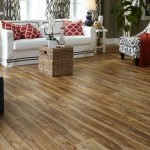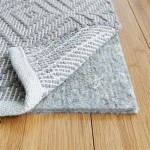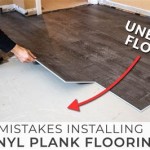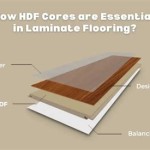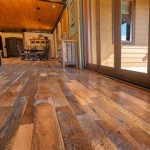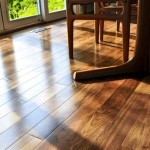Engineered Wood vs. Solid Wood Flooring: A Cost Per Square Foot Comparison
When considering flooring options, homeowners and contractors often grapple with the decision between engineered wood and solid wood flooring. Both offer aesthetic appeal and can increase a property's value, but significant differences exist in their construction, performance characteristics, and, critically, their cost per square foot. Understanding these differences is essential for making an informed decision that aligns with budgetary constraints and project requirements.
Solid wood flooring, as the name suggests, is constructed from a single piece of hardwood. This gives it a natural, timeless look and allows for multiple refinishing cycles, potentially extending its lifespan considerably. Conversely, engineered wood flooring comprises multiple layers. The top layer is a veneer of hardwood bonded to a core typically made of plywood or high-density fiberboard (HDF). This layered construction enhances stability and resistance to moisture compared to solid wood, making it suitable for a wider range of environments.
The cost per square foot of each flooring type is a primary factor influencing the final decision. This article provides a detailed comparison of engineered wood and solid wood flooring costs, exploring the variables that affect pricing and providing insights to help navigate the selection process effectively.
Raw Material Costs and Manufacturing Processes
The most significant contributor to the cost difference between engineered and solid wood flooring lies in the raw materials and manufacturing processes employed. Solid wood flooring requires large, high-quality pieces of hardwood, which are becoming increasingly scarce and expensive. The harvesting and milling of these solid planks involve intricate processes that add to the overall cost. Furthermore, the drying and curing of solid wood are time-consuming procedures critical to preventing warping and cracking. These factors contribute significantly to the higher price point of solid wood flooring.
Engineered wood flooring, on the other hand, typically utilizes a thinner layer of hardwood veneer. This veneer can be sourced from a wider range of timber, including faster-growing and more readily available species. The core of engineered wood, typically composed of plywood or HDF, also contributes to cost savings compared to solid wood. The manufacturing process involves bonding these layers together using adhesives under high pressure, a process that can be more efficient than milling solid wood planks.
Consequently, the raw material and manufacturing costs associated with engineered wood flooring are generally lower, resulting in a more affordable price per square foot compared to solid wood.
Examining specific wood species further clarifies this cost differential. For example, solid oak flooring, a popular choice for its durability and aesthetic appeal, requires substantial oak timber. Conversely, engineered oak flooring uses a thinner oak veneer over a less expensive core material, leading to a significant price difference while still achieving a similar visual appearance.
It's also important to consider the grading of wood. Solid wood flooring is often graded based on its appearance, with higher grades featuring fewer knots and imperfections, commanding a premium price. While engineered wood also has grading, the manufacturing process can sometimes minimize the impact of imperfections in the veneer, allowing for a broader range of wood to be used, potentially lowering the material cost. The cost reduction is achieved while still maintaining a consistent and desirable surface appearance.
Installation Costs and Subfloor Requirements
Beyond the cost of the materials themselves, installation costs play a crucial role in the overall expense of a flooring project. The method of installation and the condition of the subfloor significantly influence the total cost per square foot.
Solid wood flooring is typically installed using nails, staples, or adhesives, requiring a stable and level subfloor. Often, solid wood requires a plywood or OSB subfloor properly prepared. Installation is generally more labor-intensive and time-consuming, requiring experienced installers to ensure proper alignment, secure fastening, and minimize potential issues such as warping or cupping. The expertise required for solid wood installation often translates to higher labor costs compared to engineered wood.
Engineered wood flooring offers greater versatility in installation methods. Many engineered wood products feature click-lock systems, allowing for a floating installation where the planks are interlocked without being directly attached to the subfloor. This method can be faster and less labor-intensive, potentially reducing installation costs. Additionally, engineered wood can be installed over various subfloor types, including concrete, which is often not suitable for solid wood without significant preparation. This adaptability can further reduce overall costs by minimizing the need for extensive subfloor preparation or modification. While some engineered wood can be nailed or glued down, the floating floor option provided by many manufacturers adds to the versatility and can positively impact the total cost.
The need for underlayment must also be considered. For floating engineered wood floors, underlayment is crucial for sound dampening, moisture protection, and providing a smooth surface. This adds to the material cost but can contribute to long-term performance and comfort. Solid wood flooring might also benefit from underlayment, depending on the subfloor and environmental conditions.
Therefore, when comparing total costs, it is imperative to factor in not only the material cost per square foot but also the expenses associated with installation, which can vary significantly depending on the chosen flooring type and the specific installation requirements.
Lifespan, Maintenance, and Resale Value
While initial cost is a primary consideration, the long-term value of flooring depends on its lifespan, maintenance requirements, and impact on resale value. These factors can influence the overall cost-effectiveness of each flooring type over time.
Solid wood flooring, due to its solid construction, offers the potential for multiple refinishing cycles. Over time, scratches and wear can be sanded down, and the floor can be re-stained to its original glory or a completely new aesthetic. This refinishing capability can extend the lifespan of solid wood flooring for decades, potentially making it a cost-effective investment in the long run, despite the higher initial cost. However, solid wood is susceptible to moisture damage and requires careful maintenance to prevent warping, cracking, and other issues.
Engineered wood flooring, in contrast, has a more limited refinishing potential. The number of times an engineered wood floor can be refinished depends on the thickness of the hardwood veneer. Floors with thicker veneers can withstand more sanding than those with thinner veneers. While engineered wood is more resistant to moisture than solid wood, it still requires proper maintenance to prevent damage. Regular cleaning and the use of appropriate cleaning products are essential for preserving its appearance and longevity.
From a maintenance perspective, both solid and engineered wood flooring require regular cleaning to remove dirt and debris. Both can be maintained with sweeping or vacuuming, with occasional damp mopping. The type of finish on both flooring types will influence the choice of cleaning solutions.
Regarding resale value, both solid and engineered wood flooring can positively impact a property's appeal. Solid wood is often perceived as a premium material and can add significant value, especially in higher-end homes. Engineered wood flooring, particularly high-quality options with thick veneers and attractive finishes, can also enhance resale value and provide a more affordable alternative for homeowners seeking the look and feel of hardwood.
Analyzing the long-term costs associated with maintenance, repair, and potential replacement is crucial for making an informed decision. While solid wood flooring may have a higher initial cost, its potential for longevity and refinishing could make it a more cost-effective option over the life of the home. However, the durability and ease of maintenance offered by engineered wood flooring could be a more suitable choice for some homeowners, especially in environments prone to moisture or where budget constraints are a primary concern.
Ultimately, the best flooring option is one that aligns with the homeowner's lifestyle, aesthetic preferences, budget, and the specific requirements of the installation environment. Careful consideration of the factors outlined above will help ensure a satisfactory outcome and a worthwhile investment.

Hardwood Vs Engineered Wood Flooring Which Is Better Bessemeter

The Complete Guide To Flooring Costs By Type Twenty Oak

Solid Wood Vs Engineered Furniture What You Need To Know Before Making A Purchase Suren Space

Cost To Install Hardwood Flooring Floor Fixr

Cost To Install Hardwood Flooring Floor Fixr

Solid Vs Engineered Quality Hardwoods Superior Design Palo Duro

Cost To Install Hardwood Flooring Floor Fixr

Solid Vs Engineered Hardwood Which Is Better

How Much Does Engineered Hardwood Flooring Cost 2025 Today S Homeowner

Solid Hardwood Vs Engineered Flooring Blog
See Also
